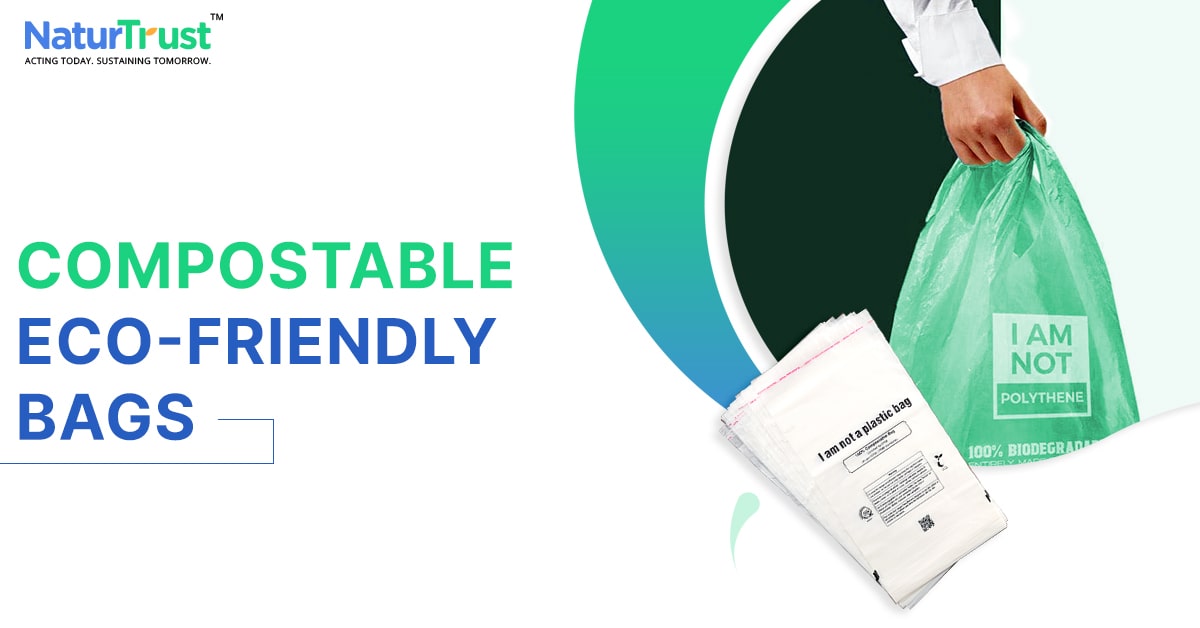

Latest Blogs




Latest News

Nestle CEO says business case for sustainability emerges as consumers demand it more than before


About Bioplastics
Biodegradable plastics are the need of the hour. Bioplastics generate a lesser carbon footprint and help to form a lesser polluted ecosystem. Depending on the material and manufacturing process, bioplastics generate lower emissions of greenhouse gases. The problems of plastic-landfills and floating plastics in oceans can also be addressed through the increased use of bioplastics.






FAQ
Biodegrable materials are those that can break down and get assimilated in nature over a period of time. This time period can range from a few months to many years. Packaging products are classified as biodegradable if they break down and assimilate in nature within one year or less.
Compostable materials are those not only break down and assimilate in nature over a period of time, but also provide important nutrients to the soil.
Compostable materials are those not only break down and assimilate in nature over a period of time, but also provide important nutrients to the soil.
Bioplastics are of three main types:
Degradable: These are the bioplastics that are technically degradable but do not return to their natural state and remain in the environment as pollutants.
Degradable: These are the bioplastics that are technically degradable but do not return to their natural state and remain in the environment as pollutants.
Biodegradable: These are the bioplastics that can be degraded within a few months.
Compostable: These are the bioplastics that can be broken down in nature by the action of microorganisms and get converted into nutrient-rich biomass in a few months.
Composting is a human-driven process of biodegradation. The conditions for composting to happen include the presence of heat, humidity and oxygen. These create ideal conditions for micro-organisms to break down compostables into compost.
No, conventional plastic cannot be biodegradable or compostable.
Conventional plastic does not biodegrade as the chemical bonds are too strong to be broken by natural processes.
Home compostable packaging means that the packaging can be composted at home by placing it in a home compost bin or pit. Industrial compostable packaging can only be treated at specialised facilities at high temperatures (above 55 degrees, much higher than can be achieved at home) to accelerate the degradation of the material.
While compostable bags decompose completely, the oxo-biodegradable bags leave small particles behind as they decompose, and those particles can be problematic (since they are often made from petroleum products). Compostable bags don’t leave any undesirable traces at all.
No. Our products are compliant with Home/Industrial composting standards.
Environmental claims of bioplastics products are verified by third-party certification. These certificates are awarded to the products that meet the approved standards (e.g. EN, ISO, or ASTM norms). For example, an EN 13432 standards-compliant product is one that meets the industrial compostability standards.
After compostable plastics biodegrade, less than 10% of the material is left behind in the form of water and biomass. There are no harmful substances left behind.
Some economic advantages of bioplastics are:• Energy savings during production.
• No consumption of non-renewable sources.
• Reduction of non-biodegradable waste.
• No consumption of non-renewable sources.
• Reduction of non-biodegradable waste.
The land used to grow the renewable feedstock for the production of bioplastics amounted to approximately 0.75 million hectares in 2015, which accounts for only 0.01 per cent of the global agricultural area of 5 billion hectares, 90 per cent of which were used for pasture, feed, food, other material uses, bioenergy, and biofuels.
Assuming continued high and maybe even politically supported growth in the bioplastics market, at the current stage of technological development, the expected use of land for bioplastics production is only around 1.7 million hectares which is 0.02% of the agricultural land.
Assuming continued high and maybe even politically supported growth in the bioplastics market, at the current stage of technological development, the expected use of land for bioplastics production is only around 1.7 million hectares which is 0.02% of the agricultural land.
Studies have shown that there is a little risk posed by biodegradation of biodegradable plastics in landfills. Most bioplastics remain inert in landfills.
As an important part of the bio economy, bioplastics are a future market offering job creation, development of rural areas, and global export opportunities for innovative technologies. With increasing growth, the bioplastics industry could realise steep employment growth over the next decades.
Bio-based plastics have the same properties as conventional plastics but also feature the unique advantage to reduce the dependency on limited fossil resources and to potentially reduce greenhouse gas emissions. Consequently, bio-based plastics can help to decouple economic growth from resource depletion and help the EU to meet its 2020 targets of greenhouse gas emissions reduction. Moreover, bioplastics can make a considerable contribution to increased resource efficiency through a closed resource cycle and use cascades, especially if bio-based materials and products are being either reused or recycled and eventually used for energy recovery (i.e. renewable energy).
If half of the world’s plastic production switched to crop-based bioplastics, the industry would still only require 3% of the world’s cultivated land. Bioplastics are typically made from materials that are not suitable for human consumption. For example, producers do not use food grade corn in the manufacture, thus it can be grown on outlying agricultural land and not interfere with food production.













